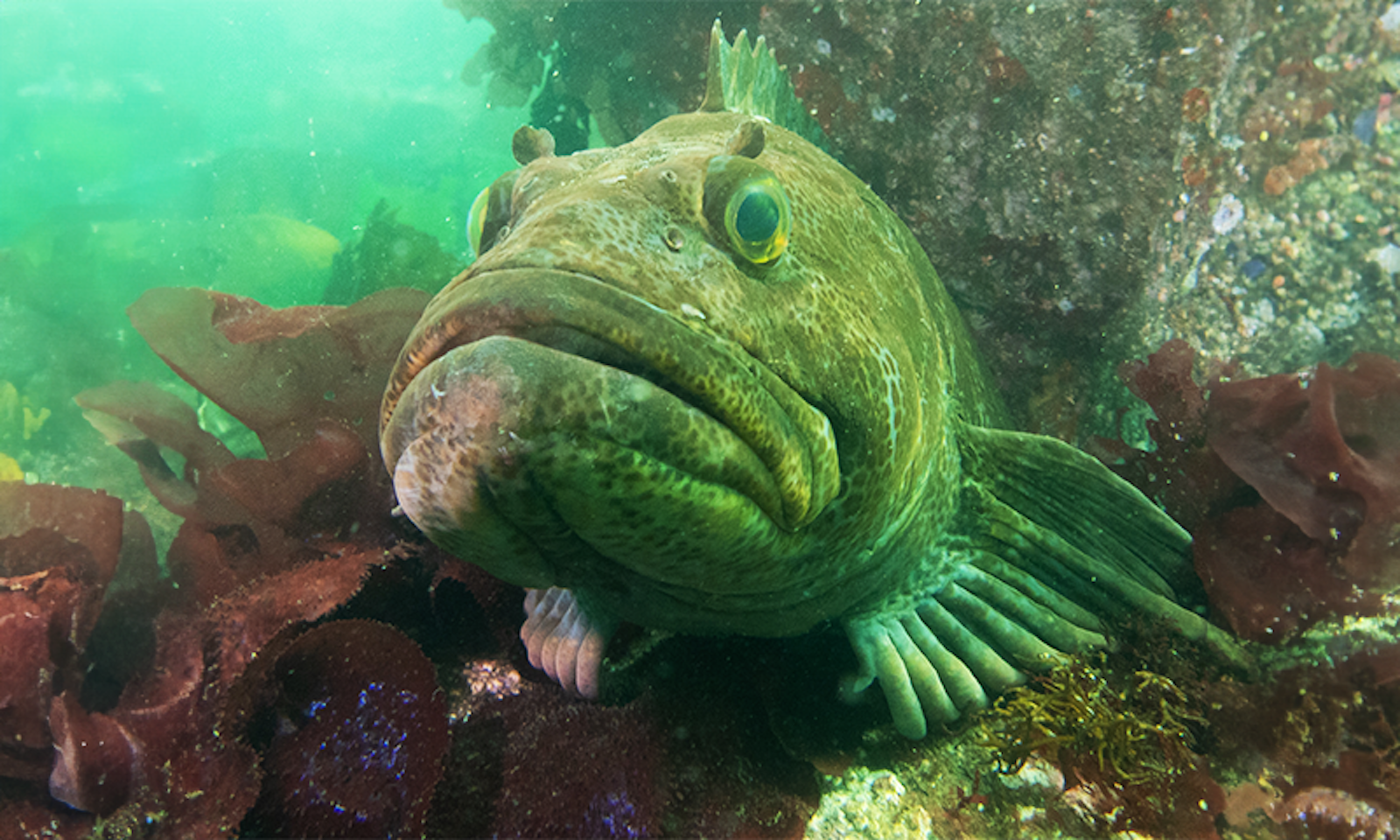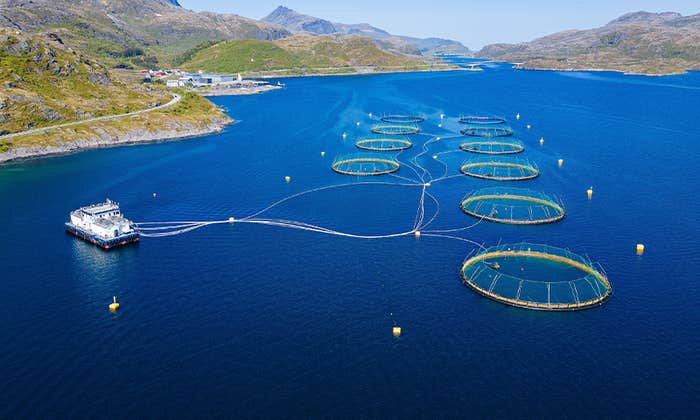Along the Pacific Northwest coast of North America, a single fish has many names: ulchen, yshuh, uthlecan. These all describe the shimmering silver Thaleichthys pacificus, a coastline-dwelling smelt who migrate up rivers to spawn. The names are all variants of the word eulachon, from an Indigenous Chinook word for “grease.”
Indigenous people processed the fishes’ oily flesh into preservatives, medicine, and food. When dried, the fish could even be ignited and used as candles, hence the English names “oilfish” and “candlefish.” Some Haida communities in what is now British Columbia obtained hum (eulachon oil) or saaw (dried and smoked eulachon) in trade from the Tsimshian people. In the local language of Nass-Gitksan, the fish is sometimes called ha la mootxw, which means “curing humanity.”
A fish’s name is more than a word. It’s a window.
All those names are contained in the entry for T. pacificus in FishBase, a global database of fish species. The compendium was launched in the late 1980s by researchers who wanted to collect not only scientific data on the world’s roughly 35,000 known fish species, but also their names in as many languages as possible. FishBase now catalogs more than 320,000 fish names in about 350 languages—not just major languages like Japanese or English, but also many smaller and local ones, most of them Indigenous.
English as a global lingua franca has amassed many names for fish from around the world. But among the general public, fish knowledge has deteriorated to the point where many people can only name a handful of species, often only knowing them as filets in supermarkets. FishBase serves as a reminder of the rich relationships that different societies, especially Indigenous cultures, have with marine life. A fish’s name, after all, is more than a word: It’s a window into how different cultures view, trade, use, and mythologize fish, says Deng Palomares, a senior scientist at the University of British Columbia’s Sea Around Us research unit and a longtime data curator of fish names at FishBase. “The number of names for one fish gives you an idea of how important that fish is to the culture,” Palomares says.

The Pacific Northwest coast is exceptionally fertile cultural ground for fish names. The region boasts dozens of languages, making it one of the world’s most linguistically diverse areas. Fish have long been the primary protein source in the region, where the jagged topography and oft-waterlogged soils make agriculture difficult. Over generations, societies there developed a rich knowledge of different species, advanced fishing technologies, and various methods of preparation and preservation—and all the language to describe that, says James Crippen of the Tlingit Nation, and a linguist at McGill University in Canada.
Even today, locally caught fish constitute much of the Tlingit and Haida diet, Crippen says. “In a society where you’re eating a hell of a lot of fish, it becomes perfectly normal to have a lot of terms for fish,” Crippen says.
Many of the names in FishBase have no translations—perhaps in part because they’ve been used for so long that they’ve become basic terms with no discernible etymology, like the term “cod” in English. However, the names that do have translations reveal a lot about the various uses for fish. Saanich, for example, a Salish language spoken in southern Vancouver Island, boasts a rich vocabulary for pink salmon, depending on whether it’s sliced (k’wit’thet), prepared salmon eggs (shamet skelex), barbecued (sk’wel’eng’s schaanexw), or smoked salmon soup (shmexwalsh). Given the importance of trade in the Pacific Northwest region, names might also differentiate fish by how they’re processed and by whom, and where fish are harvested.
Vast amounts of this knowledge are disappearing.
“There’s a whole diversity which really relates to how people interact and relate to these entities,” says hagwil hayetsk, also known as Charles Menzies, a member of Gitxaała Nation and an anthropologist at the University of British Columbia.
A Haida nickname for lingcod, sgaagaay, means “shaman dance”: Their head-shaking when hooked resembles a shaman’s movements when dancing. Other FishBase entries allude to cultural stories, such as tcoktci’tcin, a Shuswap term for the redmouth sucker fish that translates to “having a bloody mouth.” According to one Shuswap story in FishBase, fishes descended from the upper world; aiming for a large lake, some fish smashed onto the rocks instead, wounding themselves and acquiring a bloody mouth. Another entry describes a version of an age-old poem in the Cagayanon language of the Philippines, which tells how the colorful reef-dwelling humphead wrasse got the bump on their heads: “Everyone was happy and made a lot of noise; even the humphead wrasse ran to join the fun; he crashed into a brain coral because of his haste; and that’s how he got the bump on his head.”
Many names also encode rich ecological and biological information. To environmental linguist David Harrison of VinUniversity in Hanoi, Vietnam, such knowledge is rich in many Indigenous languages. What are considered different species in the conventional scientific framework might be grouped together under one name; meanwhile an individual species may have many names that distinguish members by important biological characteristics like sex, size, behavior, life stage, or habitat.
For instance, Harrison has learned that people on Futuna Island in the South Pacific distinguish between two fish who scientists consider the same species: one sleeps in the daytime and the other at night. Palomares recounts how another Pacific Island community gives a certain fish species a different name when they’re spawning, indicating a vital life stage during which they should not be harvested. In Saanich, large coho salmon swimming upstream are called sináech, while k’wolexw are the “spent” chum salmon adults after they’ve spawned—and times of year are also named after the fish species being caught, logging a kind of ecological calendar. August, or chen’henen, is the time at which henen’, or humpback salmon, are harvested.
FishBase may help preserve a piece of cultural memory.
FishBase isn’t a perfect record of fish names. The terms are sourced from published data—including books and magazines, scientific papers, reports, theses, national species checklists—rather than directly from communities, meaning there are likely many words still unrecorded. “We also have to keep in mind that most of the world’s languages are not written,” Harrison says, “so the vast majority of names that humans have for fish are not available in any script but would have to be elicited and collected orally.”
What names are collected may still be important for researchers. Some Indigenous names could help identify important biological and ecological differences unknown to academic research. Similarities in words in unrelated languages may also help linguists trace prehistoric connections between societies, Crippen says.
Yet FishBase may also fulfill a deeper purpose. Nearly half of the world’s 7,000 identified languages—most of them Indigenous—are endangered, due to the long-lasting impacts of colonialism as well as ongoing pressure from more widely spoken languages. In the Pacific Northwest, fewer than 100 people speak Tlingit and all of them are elderly, Crippen says. Haida has fewer than 20 Native speakers. “As a consequence of this, vast amounts of this knowledge are disappearing. We’re in the very last decades of it being available,” Crippen says.
Collecting written names for wildlife is relatively low-hanging fruit in preserving these languages. The harder task is documenting how terms are used and how they connect to a culture’s worldview, as well as revitalizing them by fostering new speakers. Such efforts are underway in many places, and Palomares hopes that FishBase may help preserve a piece of cultural memory—especially as many fish themselves are increasingly threatened. She fears that otherwise, the knowledge of how fish got their names could disappear with the oldest speakers of a language. “It is recording history,” she says. ![]()
Lead photo: Campbell Gunnell / Shutterstock






































